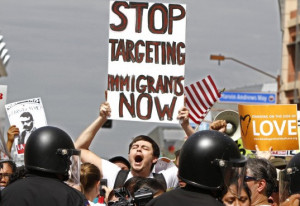US Cities Organize To End Plan Mexico
For over three months, Mexicans have organized demonstrations in the country’s cities and towns, demanding justice for the disappeared college students from Iguala, Guerrero. Yet since October, protestors have not only called for the appearance of the 43 disappeared students (now presumably 42 since the remains of one student were identified among ashes found near the scene of the crime), but also the resignation of President Enrique Peña Nieto and justice for the tens of thousands of disappeared and hundreds of femicides nationwide that have occurred, especially since the war on drugs was launched in December 2006. At the core of their criticisms is the impunity and corruption at local, state and federal levels.
While protestors in Mexico have amplified their demands, multiple protests have been organized abroad in more than fifty countries. One of the largest and most notable is in United States, known by the hashtag #USTired2.















